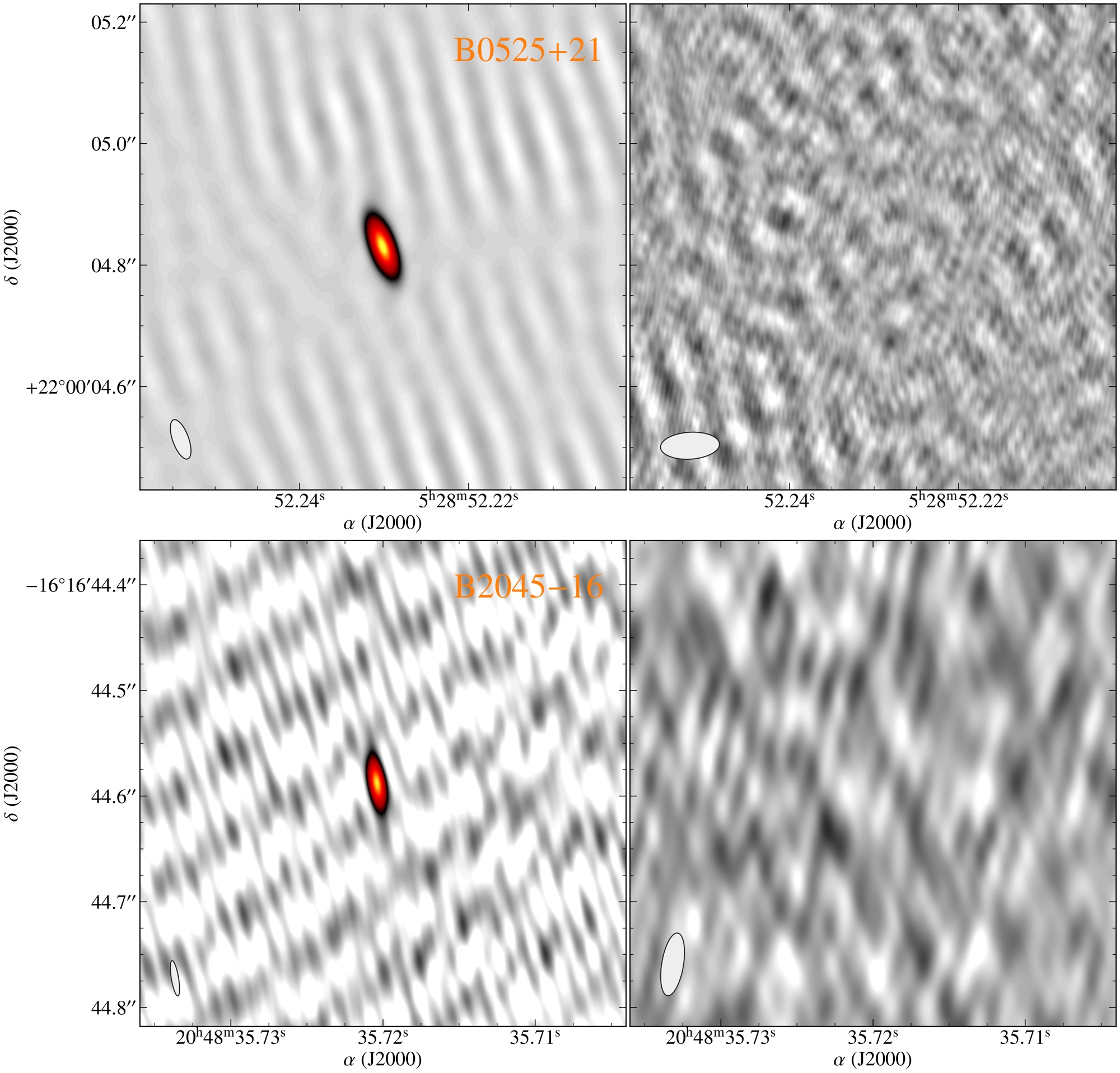Daily Image
17-07-2019Origin of the off-pulse emission from pulsars!
| Submitter: | Benito Marcote & Yogesh Maan |
| Description: | Pulsars typically exhibit radio emission in the form of narrow, periodic pulses originated from confined regions in their magnetospheres. A potential presence of magnetospherically originated emission outside these regions, the so-called off-pulse emission, would challenge the existing emission theories. Detection of significant off-pulse emission has been reported so far from only two pulsars, B0525+21 and B2045−16, at 325 and 610 MHz, with the Giant Metrewave Radio Telescope (GMRT). However, the nature of this newly uncovered off-pulse emission remains unclear. To probe its origin we conducted very high resolution radio observations of B0525+21 and B2045−16 with the European VLBI Network (EVN) at 1.39 GHz. Whereas the pulsed emission is detected at an expected level, we report absence of any off-pulse emission above the noise level (and thus to be less than 0.4 and 0.3% of the period-averaged pulsed flux density, much fainter than previously suggested values). These results suggest a non-magnetospheric origin for the previously reported off-pulse emission. Presence of extended emission that is resolved out on these milliarcsecond scales still remains plausible. In this case, we constrain the emission to arise from structures with sizes of the order of 1,000–10,000 au. These constraints might indicate that the two pulsars are accompanied by compact bow-shock pulsar wind nebulae. Future observations will clarify this hypothesis, or other possibilities such as an abrupt cutoff in the emission between 610 MHz and 1.4 GHz. These results have been published in Marcote, Maan et al. (2019, A&A, 627, L2). The image shows the pulsed emission (left) and the same field during the off-pulse region (right) for B0525+21 (top) and B2045-16 (bottom). |
| Copyright: | B. Marcote & Y. Maan |
| Tweet |  |
